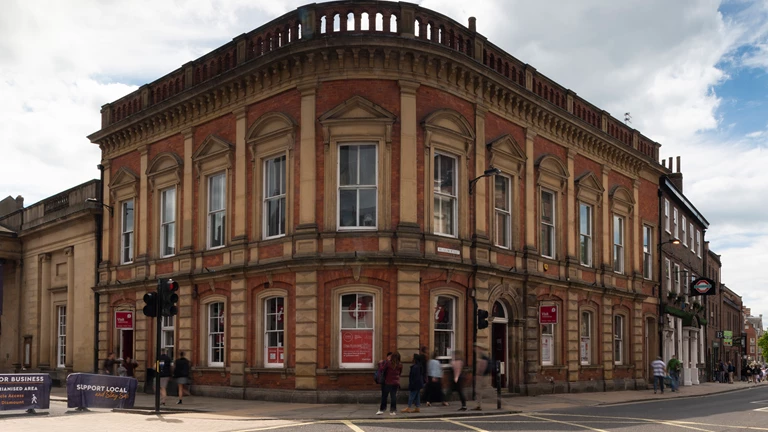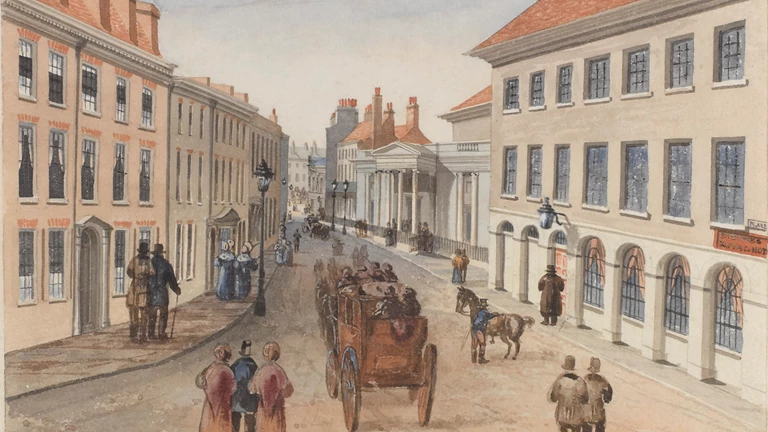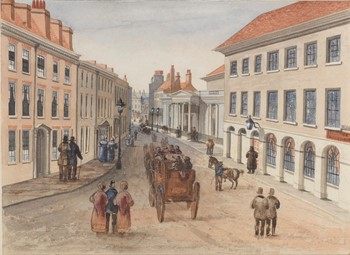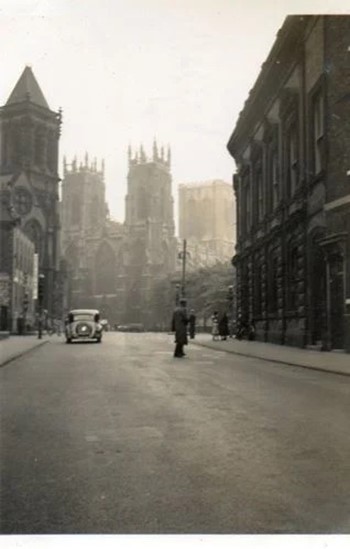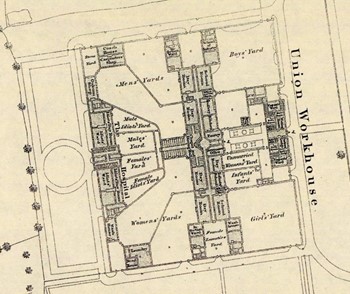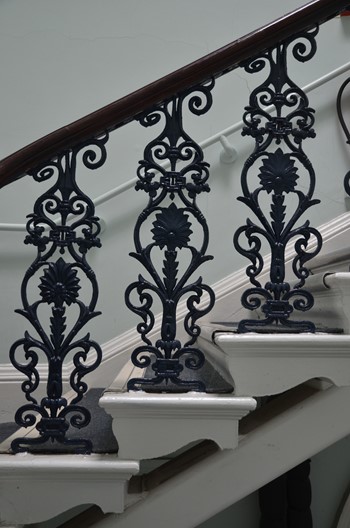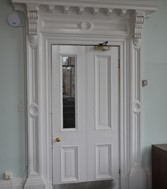1 Museum Street
Built in 1860 to house York’s Poor Law Board of Guardians.
No. 1 Museum Street is a handsome orange brick and Hare Hill magnesium limestone building wrapping around the corner of Blake Street and Museum Street in the centre of York. It occupies the former site of Mr. Elridge’s Royal Hotel, named to commemorate a levee held there by the Prince of Wales and Duke of York during 1789. Taken from the French ‘lever’, a levee is an intimate reception held by royalty, as they got up and dressed in the morning. Not a protocol that has stood the test of time.
The Royal Hotel was demolished in 1858 and a new building for the site was designed by Rawlins Gould. The prestigious corner plot stands close to York’s Grand Assembly Rooms designed by Lord Burlington and completed in the 1730s. York’s Assembly Rooms were the first commercial neo-classical building of its type north of the Alps, so it is not surprising that, as its near neighbour, Gould would design no. 1 Museum Street in a distinct Italianate style. Finished in 1860 the building was to be the offices of the York Poor Law Board of Guardians.
Enacted in 1834, The Poor Law dictated that parishes be grouped into Unions and each Union had to build and maintain a workhouse. York Poor Law Union was established in 1837. A workhouse would offer shelter and food to people with no means of income or support. Harsh and unpleasant, they were the last places you wanted to be. An existing workhouse on Marygate was the subject of "Shameful revelations" in 1845 by the Leeds Mercury for its cramped, foul conditions and a new one was commissioned and built in 1848-9 on Huntington Road by the River Foss. Still standing, today the building forms part of the accommodation for students of York St John University.
Given the grim nature of the workhouse, no. 1 Museum Street projected a wholly different image for the 'great and the good' who made up the Board of Guardians. The brickwork is constructed in a high status Flemish Bond and the building stands on a moulded gritstone plinth. Each segment of the façade on the ground floor is separated by rusticated pilasters, having unusual diamond faced blocks, sometimes referred to as ‘diamond rustication’, which comes to life as the sun sinks and illuminates the stone. The windows are set in recesses and the keystones above are carved with worm-like vermiculated patterns, a decorative treatment popularised in the UK by the architect Inigo Jones.
On the first floor the windows sit below alternating triangular and segmented pediments that are separated by tapering Doric stone pilasters. Above this is an open-arched brick parapet sitting on a broad cornice with multiple ornate console brackets.
The main entrance to the building is found on Museum Street with its round-arch doorcase and sunk-panel pilasters on either side with round patera at their centre. Above the fanlight is another fine vermiculated keyblock flanked by further patera in the arch and floral medallions in the spandrels.
On the inside the spacious entrance hall has a handsome stone staircase decorated with a cast-iron balustrade supplied by the renowned Walker Foundry of York.
At first floor level the large boardroom has spectacular views of the west front of York Minster. There are fine grey marble fireplaces supplied by the Skelton family of carvers on Micklegate and the iron ranges are further examples of the fine quality of metal work supplied by the Walker Foundry.
The architect Rawlins Gould worked for the distinguished railway architect, G T Andrews, one of the architects responsible for De Grey House, but the design of no. 1 Museum Street is a step away from the usual Gothic and Palladian style favoured by his mentor. During the 1840s Leamington born Gould initially trained with the architect John George Jackson and came to York soon after his pupillage to join Andrews's practice. Rising rapidly to become Chief Assistant and then Partner just before Andrew’s death in 1855. Gould worked closely with another assistant, Charles Fisher, grandson of the famous carver and sculptor John Fisher, to ensure the architectural practice survived the loss of its founder.
It has been said the practice was by then losing its flair, but this seems unjust. Some of the work which needed completing like the chapel at Bootham Park Hospital and at Hutton’s Ambo retain much of Andrew’s formulaic style but later buildings such as no. 1 Museum Street show more freedom and innovation.
Gould also developed an interest in medieval glass and published a book in collaboration with his friend Fredrick Bell. However, the only known example of their stained glass work was in the nave arcades of the dilapidated Christ Church in Kings Square, sadly demolished for road widening in 1937.
Gould never married, living at 12 South Parade in the latter part of his life, he was, however, greatly involvement with York’s local Rifle Volunteers for which he became Quartermaster. There is a theory that the Rifle Volunteers Drill Hall in St. Andrewgate was designed by Gould prior to his death in 1873.
The York Poor Law Union, for which no. 1 Museum Street was initially built, was abolished in 1929 and replaced with the York Public Assistance Office, which was itself abolished in 1948. From 1951 the building housed the York Festival Office until 1984, when the City Council began using it for other general offices. In 2010 the Trust acquired the building, restoring it to full use and leasing it to the City as the Tourist Information Centre.
Today, smart phone technology and instant access to information has meant that the large building was not required for the Tourist Information Centre, which subsequently downsized to a much smaller building on Parliament Street in 2020.
Currently, no. 1 Museum Street is awaiting its next tenant and chapter of its history.
Learn more about York's Poor Law Union and Workhouse here.
Children and Young People in York Workhouse 1879 - 1887
Discover more about no. 1 Museum Street
1 Museum Street
York
YO1 7DT
Historic England Grade ll listed building
Charles Dillon watercolour from 1822 of the original Royal Hotel on the site of No. 1 Museum Street. You can see the Grand Assembly Rooms in the background.
Museum Street towards the Minster, c 1940s. Photograph courtesy of David Lovell.
Plan of York Union Workhouse 1852 (Courtesy of David Rumsey Map Collection, David Rumsey Map Center, Stanford Libraries).
Original features include the stair balustrade made by the famous Walker Foundry and elaborate door surround.

